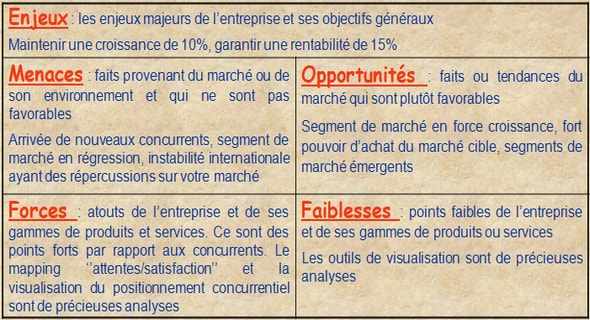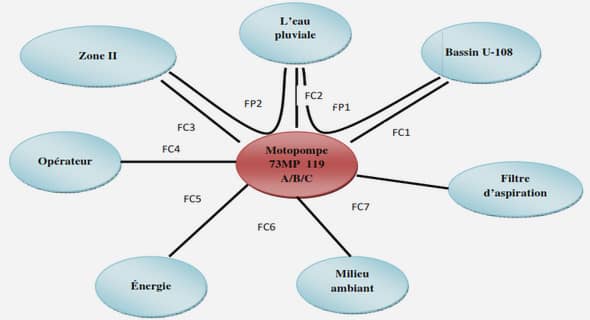Semi-solid casting process
Semi-solid forming (SSF) also known as Semi-solid metallurgy (SSM) is a forming technique invented by David Spencer in 1971 as a part of his doctoral thesis [23]. Semisolid forming combines the processes of casting, forming and extrusion. Regarding this forming process, force is applied –either mechanical or electromagnetic– to fragment the semisolid structure in the liquidus-solidus range. The temperature is retained above melting point for the whole process, then the semisolid paste is compressed inside the mold cavity under high pressure to take its final geometry [24]. Thus, turbulence associated with gravity pouring or injection is minimized; reducing internal porosity significantly as it reduces the volume of solidifying liquid [9]. Figure 2.1 shows aluminum billet in the semi-solid state ready for high pressure die casting that follows the semi-solid state. The laminar flow of the semisolid forming process is considered the main advantage of the SSM processes on other normal casting techniques. The laminar flow decreases the formation of oxides and gas entrapment and shrinkage during solidification; preventing blistering during heat treatment. Therefore, SSM casts can undergo aging heat treatment that increases the tensile and yield strength without decreasing the ductility so much [25]. One of the characteristics of semi-solid metal working is the high casting pressure, for illustration, Figure 2.2 shows different casting techniques with its pressure and gate velocity. It is noticed that semi-solid casting has relatively high pressure and lower gate velocity than all other casting techniques. The laminar flow speed varies from 20 to 50 cm/s since SSF has about 70% solid; therefore, the only expected shrinkage porosity is micro-porosity that can occur if the compressive force is not enough [24]. Table 2.2 shows the solidification range of some aluminum casting alloys to be in the semi-solid state which is essential to maintain during semi-solid casting process [11]. The major advantages of semi-solid metal working over the conventional die can be summarized by these three points:
Microstructure evolution due to semi-solid metal working Products manufactured using SSM does not have the dendritic structure as that manufactured by traditional die casting. The dendritic structure is broken up during processing and changes to spheroidal/equiaxed grain structure. The equiaxed structure exhibits superior mechanical properties that can rivals the products made by forging [11]. There are two feasible routes for SSM named “Rheocasting” (direct SSM) and “Thixocasting” (indirect SSM). It is still not clear which of these two routes may be of greater significance in the future. “Thixocasting” it involves the formation of the required billets with desired microstructure from continuous casting which is obtained usually by electromagnetic stirring. It has some disadvantages as the electromagnetically stirring process can sometimes produce inhomogeneous billets. Also, there is lost metal in reheating for about 10% of the total weight. Gates and risers cannot be recycled in the forming facility but must be sent back to ingot producer. As well as, total cycle time is high and can increase the part cost. For “Rheocasting” liquid metal is poured in an equal size container with the die to be filled and is then fed to the die chamber. This avoids the reheating process of stock metal. The SSM mix is produced and injected on demand which decrease the total cycle time and thus cost. The desired structure is obtained by cooling, grain refinement and stirring [11], [23,24]. Figure 2.3 shows the comparison between microstructure of (a) direct semi-solid metalworking, (b) indirect semi-solid metalworking and (c) conventional casting processes. The semisolid casting process is characterized by the presence of equiaxed (or rosettes like) grain structure. It differs than the dendritic structure found in conventional casting as shown in Figure 2.4. It can also be observed that the microstructure of semisolid casting is nearly the same throughout the whole thickness as shown in Figure 2.4b,c [26]. Figure 2.5 shows the effect of semisolid casting in fragmenting the β-Fe intermetallics and spherodizing the π-Fe and silicon. The sample was taken from the control arm and polished to be used under the scanning electron microscope.
Effect of multiple thermal aging on the mechanical and microstructure characteristics of A357.0 As mentioned above, the as-cast A357.0 is characterized by the presences of Mg and Si segregation in the Al matrix. The widely used heat treatment process for this alloy is the T6 thermal treatment, in which solution heat treatment helps in dissolving them back to the matrix [30]. However, recent studies have proven the superior mechanical properties that can be obtained by using multi-step thermal aging rather than T6. The results of the tensile testing done by H.Zhy et al [31] shown in Figure 2.7. Samples were solution heat treated at 543 °C for 12hrs then quenched in water maintained at 80 °C. Single stage aging was done at temperatures 155, 165 and 175 °C for 4h to 16h. For step aging, samples were pre-aged at 155 °C for 4h then finally aged at 175 °C for 3h to 18h. The results show enhancement in the strength and ductility values of samples that were step aged for 12h as shown in Figure 2.7a. It is also observed general enhancement in the tensile properties of the step aged samples on the single aged samples. The explanation of the high strength and ductility is the presence of different precipitate sizes of Mg2Si. Figure 2.8a shows the TEM imaging of A357 semisolid cut from the control arm and aged according to the multiple interrupted WC3 (Figure 3.2). It is observed the different sizes of Mg2Si that compromise between strength and ductility. In the contrary of Figure 2.8b that is of nearly similar alloy and shows same precipitates size under single aging condition. Since the aluminum A357 is the material used in manufacturing of the suspension lower control arm in this study; the design of such component also has a great role in its fatigue life. It is important to gather information about new trends in suspension systems in general, as well as, the optimized -or recommended- designs of various types of control arms. The next subsection focuses on researches done automotive suspension especially the McPherson strut suspension. Also, a collection of different studies applied on various types and designs of control arm is found. The sub-section ends by the latest study and recommendations for the control of interest in this project done by the same group (Laboratoire de modélisation en mécanique des solides appliquée (LM2SA).
Failure of lower control arm Manufacturing of first generations of lower control arm employed nodular cast iron as its material, and it was often used as cast without any thermal treatment [41]. Recently, control arms have been manufactured from different steel grades using forging to reduce the part’s weight. The introduction of aluminum alloys in automotive industry to substitute steel has shifted manufacturing techniques back to casting as it is more economical than forging. The most common disadvantages of casting are inhomogeneous microstructure and uneven mechanical properties. Furthermore, shrinkage during casting solidification can cause compressive residual stresses in the material of the control arm. The study of the effects of these defects is very important in the development of the design of this mechanical component. Suspension control arms are subjected multiaxial fatigue with variable amplitudes due to the different road conditions.
As a result, microstructure variations, casting defects, residual stresses and stress triaxiality should be integrated in the design of such components [42]. A study by Y.Nadot etal [42] on lower control arm fabricated form nodular cast iron of 95% ferrite and 5% pearlite was conducted to show the effect of casting defects, as well as, loading cycles on the total fatigue life. An experiment of the setup shown in Figure 2.17 was used with a frequency of 10 Hz for all real test samples. Loading condition of interest to compare with this project was set at 1573 daN (15.73 kN) in the positive x-direction with and R factor of -0.5. The results shown in Figure 2.18 represent the failure percentage of lower control arms in the load vs number of cycles curve. It can be observed that 90% of control arms have an infinite fatigue life at around 19 kN of maximum force for the cast iron control arm. The study also concluded that the most common reason of fatigue failure is resulted from oxides at the surface of the control arm [42]. Figure 2.18: Results of fatigue experiment in [42],plotting maximum force in dekanewtons vs number of cycles. The fractured surface is shown in Figure 2.19 showing the surface casting defect causing failure. The SEM imaging of the fractured surface is shown in Figure 2.20, and it can be clearly observed the presence of internal shrinkage and oxides that was the main reason of failure. From this study and others discussed in this sub-section, it can be concluded that the design of lower control arm can be optimized regarding its geometry. It is also very important to integrate casting defects and the effect of multiaxial fatigue in the design of such component. The combination of all these factors can lead to a superior control arm in terms of total fatigue life.
Conclusions and Recommendations
The results of tensile testing, control arm fatigue and cantilever bending fatigue emphasis the outstanding performance of the aging cycle WC3 than all other aging cycles. The WC3 aging cycle managed to outperform the T6 condition regarding strength and fatigue life. The WC3 aging cycle also has proven to withstand double the fatigue life compared to T6 condition which is a huge development in the industry of automotive components as suspension arms. The results of tensile properties show that multiple interrupted aging cycle WC3 shows superior strength (YS=288 MPa) compared to other cycles. WC3 also shows a good ductility value of 9.4% compromising both strength and ductility in an economical aging cycle. WA0 also shows a remarkable compromise between strength and ductility and is more economical than the standard T6 heat treatment. Aging cycle WC3 shows 100% enhanced of real part fatigue life than the standard T6 with 72,000 cycles for C3 compared to 36,000 cycles for T6. WA0 also shows enhanced low cyclic fatigue life of 40,000 cycles and as mentioned earlier is more economical than T6. The results of cantilever bending test reveals superior fatigue life for aging cycle WC3 with an average of 82,000 cycles compared to an average of 53,000 for T6. These results confirm the results of the real part fatigue and prove the positive effect of WC3 on fatigue life. The aging cycle WA1 also shows enhancement over T6 with an average of 59,250 cycles, it is also considered to be more economical than T6. Design 4 (Trussed design) shows superior properties than the original design. With a 160 gm lighter than the original design and a maximum VM stress of 198 MPa compared to 232 MPa for the original design. Design 4 is also more flexible than the original design which can improve damping and increase the life of the ball joint connected to the control arm significantly. This flexibility is believed to better cushion road impacts resulting in better suspension behavior and comfort. Applying the selected WC3 heat treatment to design 4 is expected to withstand more than 84,300 cycles6 which is 134% enhancement of the part’s life.
Résumé |

